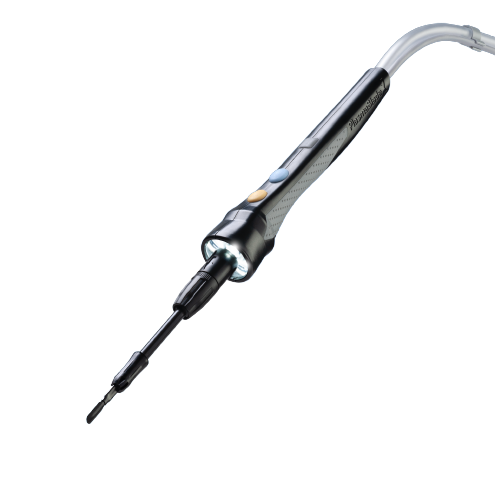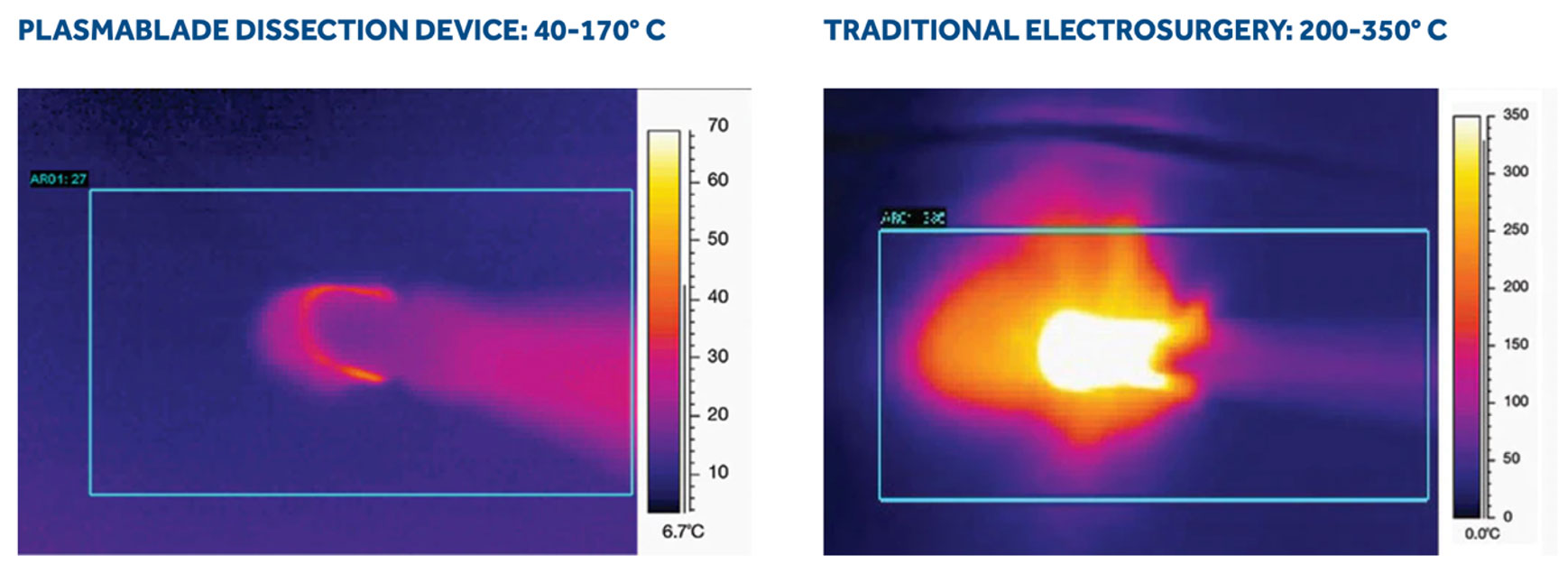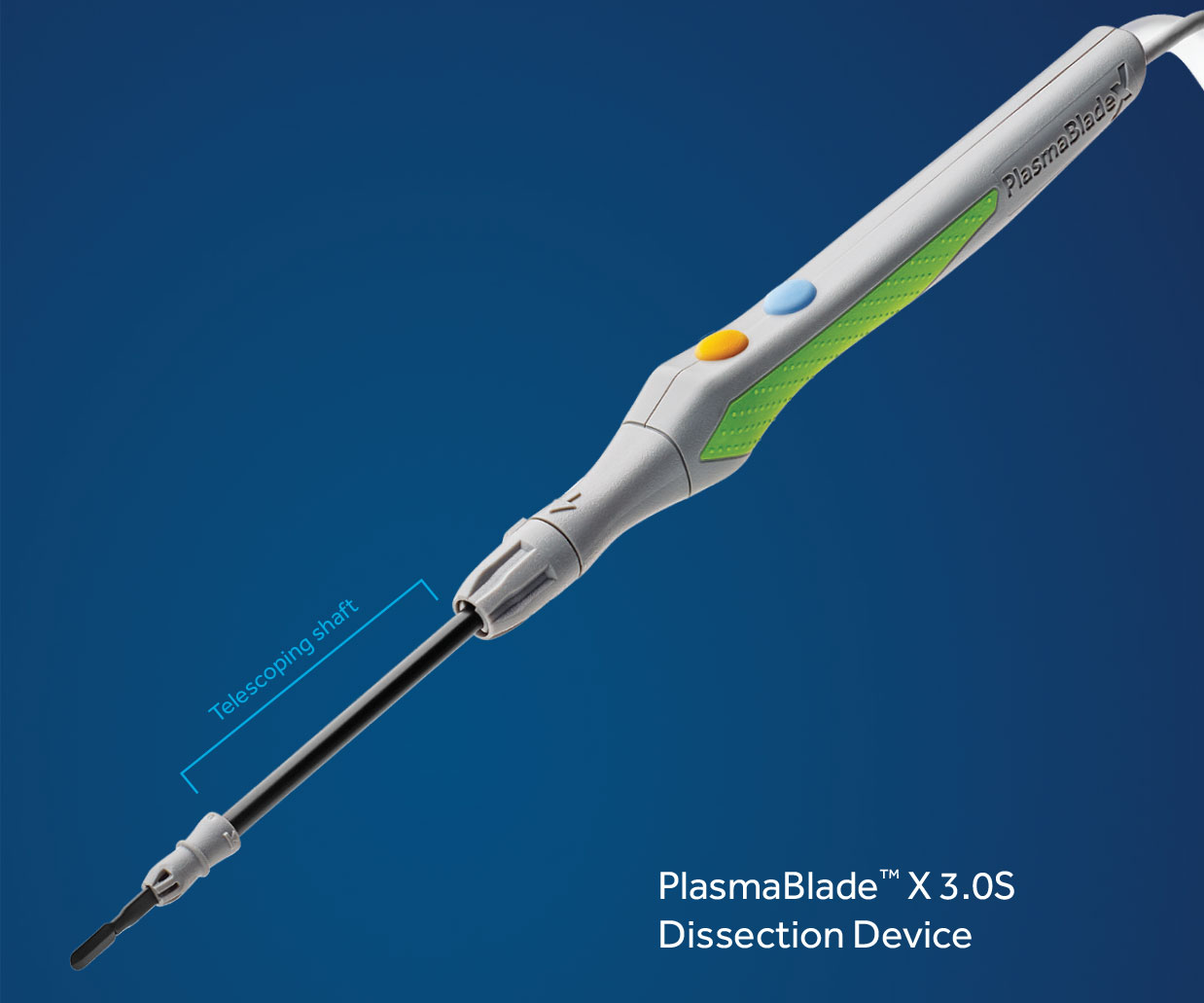PlasmaBlade™
The PlasmaBlade™ is a precise dissection device using very brief pulses of radiofrequency (RF) energy for the cutting and coagulation of soft tissue during surgical procedures.
The RF energy, combined with a proprietary insulation technology, enables the PlasmaBlade™ to dissect with the precision of a scalpel, and the bleeding control of traditional electrosurgery, while producing minimal thermal damage to surrounding tissue. Clinical research has demonstrated that low thermal injury technology offers intra-operative and post-operative benefits when compared to the current standard of care — scalpel and traditional electrosurgery.[1,2,3]

1. Ruidiaz ME, Messmer D, Atmodjo DY, et al. Comparative healing of human cutaneous surgical incisions created by the PEAK PlasmaBlade, conventional electrosurgery, and a standard scalpel. Plast Reconstr Surg. 2011;128(1):104-111.
2. Fine RE, Vose JG. Traditional electrosurgery and a low-thermal-injury dissection device yield different outcomes following bilateral skin-sparing mastectomy: a case report. Journal of Medical Case Reports. 2011, 5:212.
3. Loh SA, Carlson GA, Chang EI, Huang E, Palanker D, Gurtner GC. Comparative healing of surgical incisions created by the PEAK PlasmaBlade, conventional electrosurgery, and a scalpel. Plast Reconstr Surg. 2009;124(6):1849-1859.
Indications

Benefits
Lower temperature
Demonstrated a 64% average reduction in blade temperature (40–170°C) for similar CUT settings, and a 45% average reduction for similar COAG settings when compared to traditional electrosurgery (200–350°C)[1]Incision healing
Equivalent cutaneous healing to scalpel.[4] Significantly reduced thermal injury depth and scar width compared to traditional electrosurgery[5]Increased efficiency
Maintains cutting effectiveness and haemostatic ability even when submerged in liquefied tissue or blood, unlike traditional electrosurgical tools[6]Reduced surgical smoke
Less surgical smoke,[7] allowing for increased visibilityReduced risk
Eliminates risk of inadvertent scalpel injury
1. Ruidiaz ME, Messmer D, Atmodjo DY, et al. Comparative healing of human cutaneous surgical incisions created by the PEAK PlasmaBlade, conventional electrosurgery, and a standard scalpel. Plast Reconstr Surg. 2011;128(1):104-111.
Operating temperature is a function of device settings, electrode configuration and treatment time. Operating temperatures outside this range may be observed.
4. Data on file. PEAK PlasmaBlade operating temperature study summary. 71-10-2475.
5. Cao J, Steiner P, Vose JG. Electrical interference in ICD ventricular sense channel: Medtronic PEAK PlasmaBlade compared to traditional electrosurgery. APHRS November 2015.
6. Palanker DV, Vankov A, Huie P. Electrosurgery with cellular precision. IEEE Trans Biomed Eng. 2008;55(2 Pt 2):838-841.
Data on file: Evaluation of Surgical Smoke Contamination Using Electrosurgical Devices. 81-10-5683.

PlasmaBlade™ X 3.0S LIGHT
PS210-030S-LIGHT
- Adjustable telescoping shaft
- Integrated smoke evacuation
- Bendable blade
- Four LEDs to illuminate surgical site

PlasmaBlade™ X 3.0S
PS210-030S
- Ergonomic handle design for comfort and control
- Adjustable telescoping shaft
- Locking mechanism to secure shaft at desired length
- Integrated suction for enhanced visibility

PlasmaBlade™ X 4.0S
PS200-041S
- Bendable blade
- Rotating finger grip
- Integrated smoke evacuation

PlasmaBlade™ X 4.0
PS200-040
- Ergonomic handle design for comfort and control
- Bendable shaft
- Rotating finger grip
Revolution Surgical Pty Ltd
5/14-16 Crescent Street, Rozelle NSW 2039 AU
ABN: 63 165 643 434
© 2018-2024 Revolution Surgical